
How to Launch a Fashion Brand: A Step-by-Step Guide with AI Magic
Thinking of starting your own clothing brand? You're in the right place.
In this comprehensive guide, you'll learn how to start a clothing brand from scratch - step by step.
Whether you're a fashion enthusiast with a creative spark or an entrepreneur eyeing the booming apparel market, this article will walk you through every stage of the process, from branding and business planning to design, production, and launch.
Plus, you'll discover how to leverage AI tools to speed up everything from design inspiration to marketing automation, helping you turn your vision into a successful fashion brand - faster than ever before.

Define Your Clobber Brand Identity
Before sketching your first design or choosing fabric, it’s crucial to define the identity of your clobber brand. Your brand identity is the foundation of everything - from your logo and color palette to the tone of your social media posts and the people you want to reach.
A strong identity helps you stand out in a crowded market, resonate with your target audience, and build lasting customer loyalty.
Start by answering these key questions:
- What style defines your brand (e.g., minimalist, streetwear, luxury, boho)?
- Who are you designing for? (age, gender, lifestyle, values)
- What makes your brand unique compared to others?
- What emotions or experiences do you want your clothes to evoke?
Pro tip: Use AI-powered brand tools like Looka or Brandmark to instantly generate mood boards, brand color palettes, and logo ideas based on your vision.
Sample Clobber Niches and Brand Directions
| Niche | Audience Target | Brand Feel | Example Styles |
|---|---|---|---|
| Sustainable Fashion | Eco-conscious millennials | Earthy, minimal | Organic cotton basics |
| Streetwear | Gen Z & urban youth | Bold, expressive | Graphic tees, hoodies |
| Luxury Womenswear | Affluent professionals, 30s–50s | Elegant, timeless | Silk dresses, coats |
| Gender-Neutral | Trendsetters, inclusivity-focused | Modern, fluid | Oversized unisex fits |
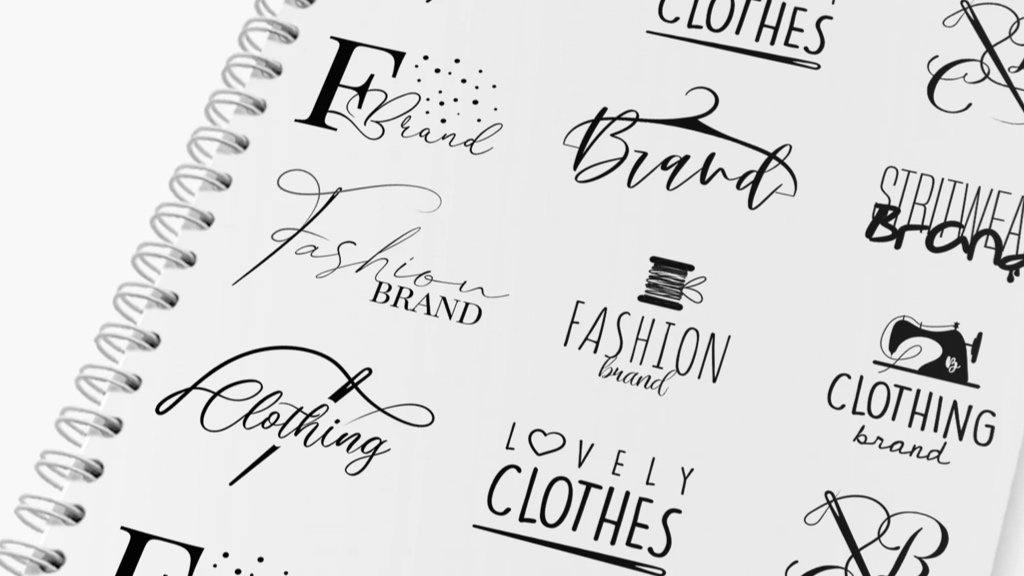
Cruthaigh Plean Gnó do do Bhraon Éadaí
Gach branda éadaí rathúil tosaíonn le plean gnó láidir. Cabhraíonn an bplean seo le do shamhlaíocht soiléir, do spriocanna a shainmhíniú, agus do ullmhú don logistici réadóirí den saol ina dtosaíonn agus a fásann do bhranda.
Níl plean gnó soiléir ach do chuidse - is uirlis cumhachtach freisin é chun infheisteoirí a mhealladh, maoiniú a bhaint amach, nó comhpháirtíochtaí a stiúradh.
Cad a chuir le do Plean Gnó
- Misean & Léargas an Bhraonda – Cad a spreagann do bhraon éadaí agus cad é mar atá tú ag iarraidh a bhaint amach ar feadh an fhad-téarma?
- Margadh Táirge – Sainmhiniú do chustaiméir fíorúil: aois acu, luachanna, nósanna, roghanna stíle, agus buiséid.
- Model Gnó – An rachaidh tú le priontáil ar éilimh, grosáil, láithreán beo-ghníomhach, nó seachadadh maille?
- Plean Táirge – Cad a dhíolfaidh tú? Tosóidh beag nó seolfaidh tú le bailiúchán iomlán?
- Straitéis Margaíochta – Ar líne, as líne, comhpháirtíochtaí iniúchaithe, cruthaitheachta ábhar, nó fógraí íoctha?
- Míreanna Airgeadais – Costais, réamhshíntiúchán ioncam, agus pointe briseadh neamhionann.
⚡ Éascaíocht Intleachtúil: Is féidir le huirlisí cosúil le ChatGPT, LivePlan, nó Notion AI cabhrú leat ranna plean gnó a uaslódáil go huathoibríoch, costais a eagrú, agus sceitimíní fás a mhaoirsiú níos tapúla ná mar a dhéanfá é go lámhleabharúil.
Costais Tosaíochta (Meastacháin) do Bhraon Éadaí Samplaithe
| Catagóir Costais | Costas Meastaithe (USD) | Nótaí |
|---|---|---|
| Bhailiú & Lógó | $100–$500 | Úsáid uirlisí intleachtúla nó dearthóirí frithleasa |
| Láithreán Gréasáin & Fearann | $150–$500 | Leagan suas Shopify, Wix, nó WooCommerce |
| Sampláil Táirge | $500–$2,000 | Braitheann sé ar an cineál táirge agus na hábhair |
| Buiséad Margaíochta | $300–$2,000/mí | SEO, fógraí meán sóisialta, comhfhiontraitheoir iniúchaithe |
| Dlí & Ceadúnais | $200–$800 | Ag brath ar an áit agus an struchtúr |
| Stóráil (an chéad rith) | $1,000–$5,000+ | Roghchlúdach mura bhfuil tú ag baint úsáide as priontáil ar éilimh |
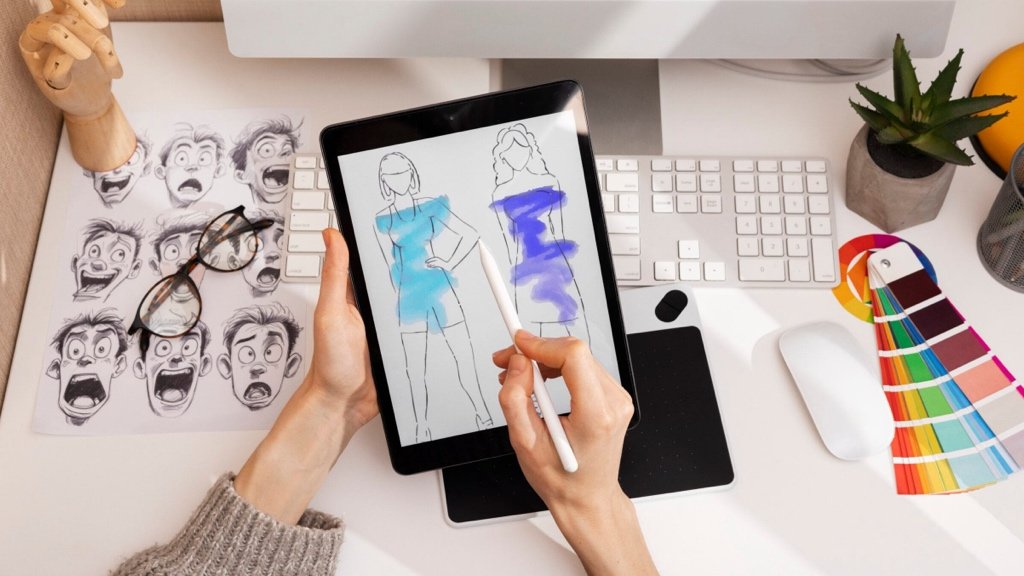
Use AI to Accelerate Your Design & Planning Process
Launching a clothing brand in 2025 doesn't have to be slow or complicated. Thanks to modern AI tools, you can dramatically reduce the time it takes to plan, design, and prepare for launch. Whether you’re brainstorming collections, naming your brand, or visualizing your audience, AI can speed up the process—and reduce decision fatigue.
⚙️ AI Tools That Can Help You Get Started
| Use Case | Recommended Tool | What It Does |
|---|---|---|
| Brand Name Generation | Shopify Name Generator, Namelix | AI-powered suggestions based on keywords and industry |
| Mood Boards & Inspiration | Fashwell, Designify | Generate visual styles, layouts, and fashion-forward boards |
| AI-Powered Design Sketches | Cala, Revery AI, Artbreeder | Turn prompts into fashion illustrations and concepts |
| Business Plan Generation | ChatGPT, Notion AI | Draft plans, pitch decks, and competitive summaries |
| Market Analysis | Trendalytics, Edited | Use AI to scan trends, pricing, and gaps in the market |
Pro tip: Combine ChatGPT + Canva to create stunning branded content quickly—even if you have zero design skills.
Time-Saving Potential with AI
- Using AI tools in your planning phase can help you:
- Generate 10x more design ideas in less time
- Test brand directions visually before investing money
- Forecast trends and adjust accordingly
- Speed up product descriptions and marketing copywriting
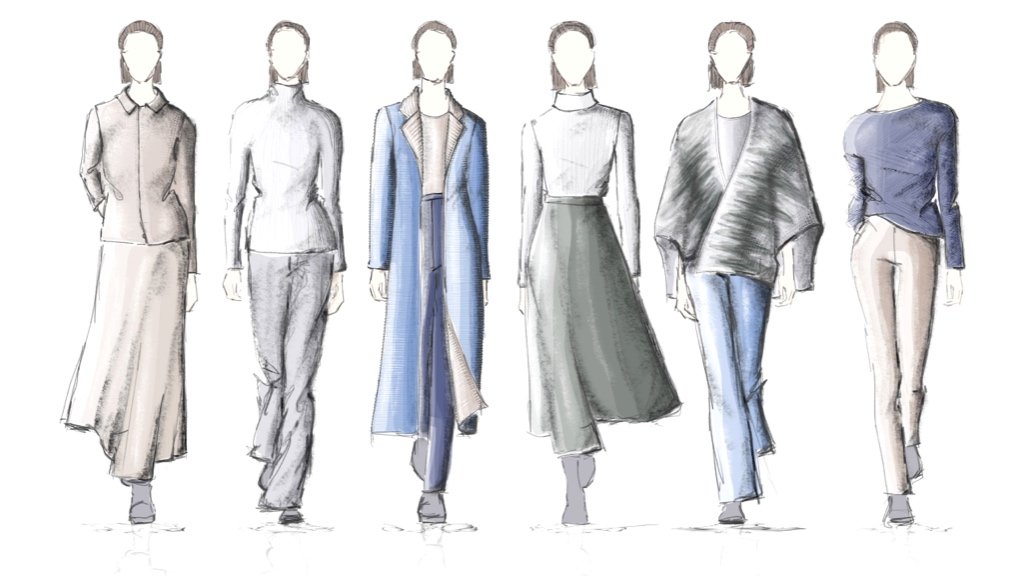
Design Your First Clothing Line
Now that your brand is defined and your business plan is in place, it’s time to start designing. This is where your creative vision meets execution. Your first clothing line should reflect your brand’s identity, appeal to your target audience, and showcase your unique style. But remember—it’s not just about looks. Your designs should also be practical to produce and aligned with your budget.
Start by sketching your ideas. Even simple pencil doodles can be the foundation of future bestsellers. Translate your vision into initial concepts, considering elements like silhouette, color palette, fabric type, and seasonal relevance. You can sketch by hand or use tools like Clo3D, Adobe Illustrator, or even AI design generators like Revery AI and Cala to turn prompts into rough prototypes. AI can also help you iterate faster by generating variations of your core designs and even creating full outfit combinations.
Once your sketches are ready, move into the product development phase. This includes creating tech packs, defining measurements, selecting fabrics, and preparing your patterns for production. If you're not ready for large-scale manufacturing yet, consider creating handmade samples or using small-batch production. Start with a capsule collection—5 to 10 pieces that work together to tell a story and test your market’s reaction.
Key Elements of a Clothing Design
| Element | Description | Tool Suggestion |
|---|---|---|
| Sketches | Initial visual representation of each garment | Paper, Adobe Illustrator |
| Tech Packs | Detailed specs, materials, and construction notes | Techpacker, Google Docs |
| Fabric Selection | Choosing material types, textures, and properties | Swatch Books, Fabric.com |
| Pattern Making | Turning design into a cuttable, sewable template | Clo3D, Seamly2D |
| Sample Creation | Producing first physical versions of garments | Local tailor, DIY sewing |
Bonus tip: Use image-to-sketch tools like DeepAI Sketch Generator or Artbreeder to convert ideas into mockups quickly—even without drawing skills.
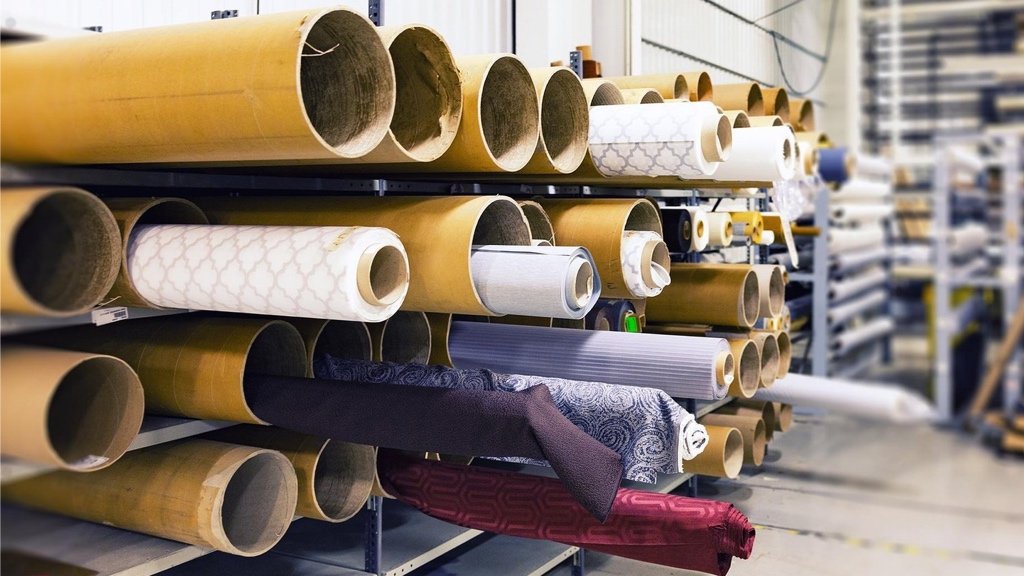
Seek Out the Finest Weaves and Decide on the Best Craft
Deciding on the correct weaves and craftsmanship is a vital task when birthing your garment brand. The threads you choose directly influence the appearance, touch, strength, and ecological footprint of your creation.
Whether your heart leans towards lavish natural cotton or daring synthetics, the selection must harmonize with your trademark spirit and principles - especially if your aim is to showcase eco-friendliness or opulence. Begin meekly by acquiring fabric samples from emporiums like Spoonflower, Tissura, or Alibaba, and ponder venturing to nearby textile fairs to physically engage with your choices.
Next, determine how to truly birth your apparel. If you’re testing the waters with your initial assortment, you can craft specimens in-house or with a neighboring tailor. However, for grander productions, you must choose between local and foreign production. Local (native) crafting gives you more authority and hastier turnaround times but generally carries a steeper price.
Foreign crafting - such as plants in China, Turkey, or Bangladesh—can curtail expenses, but is accompanied by obstacles like speech barriers, conveyance delays, and quality monitoring. AI can lend a hand here, as well: leverage platforms like ZyloTech or Maker’s Row that fuse AI to pair your brand with verified manufacturers based on your merchandise sort and capacity requirements.
Contrast of Familiar Production Methods
| Production Manner | Optimum For | Advantages | Disadvantages |
|---|---|---|---|
| In-House (DIY) | Small batches, artisanal labels | Total autonomy, meager minimums | Time-consuming, limited expansion potential |
| Native Artisan | Luxury/eco-conscious assortments | Rapid delivery, simpler discourse | Higher expenses, restricted quantities |
| Foreign Artisan | Huge-scale, thrifty production | Reduced unit price, expandable | Speech barriers, sluggish shipping |
| Print-on-Demand | Low-hazard trials, informal attire | No inventory requirements, meager startup expense | Restricted personalization, reduced returns |
️ Sourcing hint: Employ FabricAI (if accessible in your territory) or Sourcemap to unearth ethical purveyors and trace the environmental repercussions of your fabric preferences.
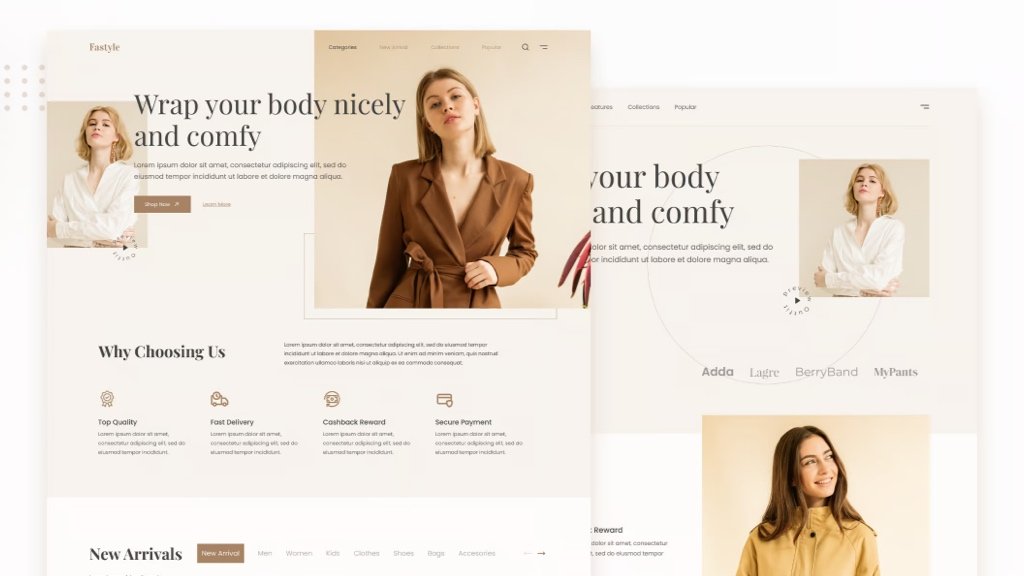
️ Build Your Online Store and Digital Presence
Your online store is more than just a place to sell - it’s your digital showroom, your brand’s first impression, and often your primary sales channel. It needs to reflect your clothing brand’s identity and create a seamless experience for customers.
Choose a reliable ecommerce platform like Shopify, WooCommerce, or Squarespace that allows you to easily manage inventory, track orders, and integrate with marketing tools. Customize your theme with your brand’s fonts, colors, and imagery to keep it cohesive. Don’t forget the basics: a powerful homepage, clean product pages, size guides, and an About section that tells your story.
An online presence goes beyond your website. You also need to create branded profiles across social media platforms like Instagram, TikTok, Pinterest, and Facebook, where visual content dominates and fashion thrives. Use these channels to drive traffic to your store, build a community, and showcase your designs.
Tools like Canva, Later, and Buffer can help schedule content, while AI caption generators like ChatGPT or Copy.ai can help you craft engaging posts at scale. Consider also setting up an email marketing funnel with Klaviyo or Mailchimp to capture leads and keep your audience informed.
Must-Have Pages for Your Clothing Brand Website
| Page Type | Purpose | Pro Tips |
|---|---|---|
| Home Page | Showcases bestsellers, collections, brand story | Use high-quality visuals + clear CTA |
| Product Pages | Details on materials, sizing, and care | Include size guide + multiple images |
| About Us | Share your story and mission | Build connection with your audience |
| Contact Page | Offers support and customer service options | Use forms and social links |
| FAQs | Handles common buyer questions | Boosts trust and reduces cart abandonment |
Tip: Use Shopify Magic or Gemini for WooCommerce to automatically generate product descriptions, SEO meta tags, and even A/B test landing pages.

Riding the Waves of Style: Balancing Costs and Stocks with Grace
Pricing your clothing correctly is key to maintaining profitability and building trust with your audience. It’s not just about marking up fabric and labor - you also need to factor in overhead, marketing costs, transaction fees, and your brand’s positioning in the market.
For example, if your clothing brand markets itself as premium and ethically made, your prices should reflect that perceived value. A solid pricing strategy blends cost-based pricing (covering your expenses) with value-based pricing (what your ideal customer is willing to pay). And AI tools like Prisync or ChatGPT can help you analyze competitors, calculate markups, or simulate different pricing tiers in minutes.
Once you set your prices, keeping your inventory under control becomes a critical challenge. Overstocking can eat up your cash flow, while understocking can cost you customers.
To manage this, use inventory software like Stocky (for Shopify), Zoho Inventory, or Cin7, which offer AI-powered forecasting, low stock alerts, and real-time analytics. If you’re just starting out, consider the made-to-order or pre-order model, which reduces inventory risk and builds anticipation for your products.
As your business grows, you’ll want to implement a more scalable inventory system - ideally one that integrates with both your website and any third-party sales channels.
Riding the Waves of Style: Balancing Costs and Stocks with Grace
| Pricing Model | How It Works | Ideal For | Example Markup |
|---|---|---|---|
| Cost-Based Pricing | Add markup on production cost | Basic & early-stage brands | 2× to 3× |
| Value-Based Pricing | Price based on perceived brand and design value | Premium or luxury fashion | 3× to 5×+ |
| Keystone Markup | Traditional retail pricing model (50% margin) | Wholesale/distributor pricing | 2× |
| AI-Driven Pricing | Dynamic pricing based on trends & analytics | Scalable brands with smart tools | Varies |
Riding the Waves of Style: Balancing Costs and Stocks with Graceip: Use demand prediction features in apps like Inventory Planner to automate reordering and prevent dead stock.
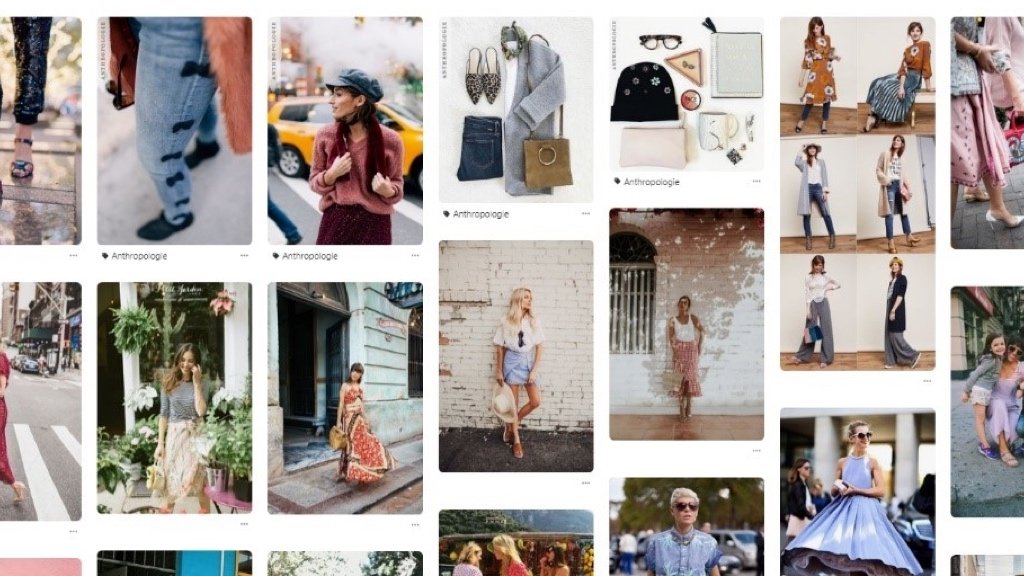
Market Your Clothing Brand (Organic & Paid Strategies)
Even the most beautifully designed clothing line won’t sell if people don’t know it exists. That’s why a strong marketing strategy is essential. Start by focusing on organic marketing—building a loyal community and brand presence without paying for every click.
Platforms like Instagram, TikTok, and Pinterest are essential for fashion, where visuals dominate. Post consistently, tell your story, show behind-the-scenes content, and engage with your audience. Use hashtags, reels, and collaborations to expand your reach. AI tools like Copy.ai, Flick, or ChatGPT can help you generate engaging captions, hashtags, and even scripts for short videos.
Once you have some traction, scale with paid advertising. Social platforms allow precise targeting by age, interest, and even fashion behavior. Start with Facebook Ads or TikTok Spark Ads, and A/B test creatives using AI tools like AdCreative.ai or Predis.ai.
Don’t forget about email marketing—an underrated but powerful tool. Platforms like Klaviyo and MailerLite can automate drip campaigns, welcome sequences, and flash sale alerts. With AI segmentation and predictive analytics, you can send the right message to the right user at the right time—without lifting a finger.
Organic vs Paid Marketing – What’s Right for You?
| Strategy | Key Tactics | Cost Level | Best For |
|---|---|---|---|
| Organic | Content marketing, SEO, social engagement | Low (time-heavy) | New brands, budget-conscious |
| Influencer Collab | Gifting, shoutouts, micro-influencer outreach | Medium | Trend-driven or youth-focused |
| Paid Ads | Facebook Ads, Instagram Reels, TikTok Ads | Medium–High | Brands looking to scale fast |
| Email Campaigns | Launch alerts, abandoned cart, loyalty promos | Low–Medium | Engaged audiences, repeat buyers |
Tip: Tools like Ocoya and Lately.ai can automatically repurpose one piece of content into multiple social posts, saving hours per week.
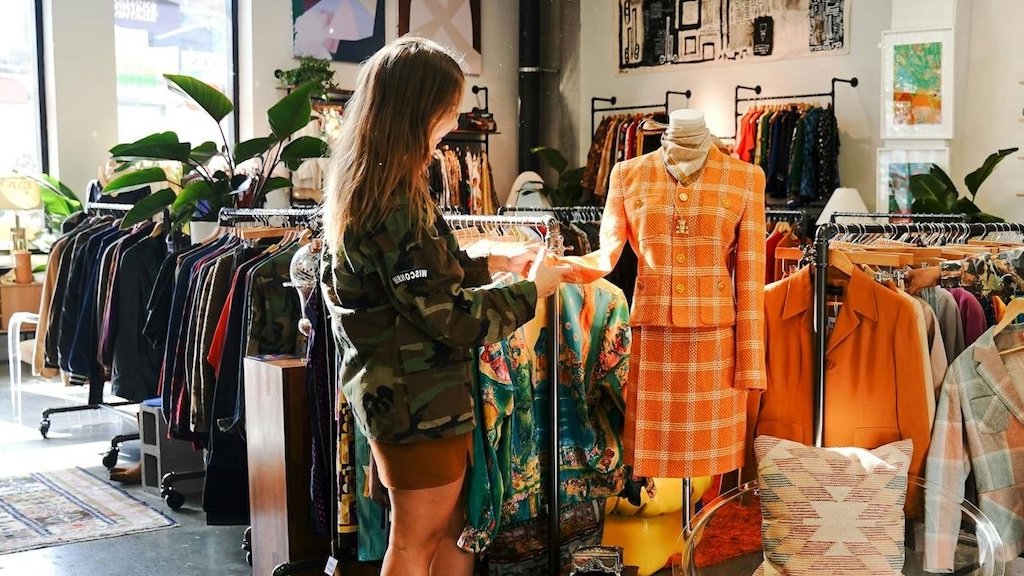
Test with Pop-ups or Local Markets
Before scaling your clothing brand, it’s smart to validate your products in real life. Pop-up shops, local fashion markets, and even vendor booths at events offer a low-risk way to connect with real customers, get direct feedback, and observe how people interact with your products.
These temporary retail setups help you test pricing, sizing, packaging, and brand messaging - all while building brand awareness and potentially earning revenue. Whether it's a weekend stand at a local art fair or a month-long pop-up in a high-footfall retail space, these moments can become micro-labs for growth.
Plus, these events are invaluable for customer discovery. You can ask questions like “What made you pick this piece?” or “Was anything confusing about the sizing?”—insights that are gold when refining your offering.
To maximize impact, prep branded signage, QR codes linking to your online store or social media, and incentives like discounts for first purchases or Instagram follows. AI tools like Canva Magic Design can help you quickly create eye-catching visuals for flyers, banners, and packaging.
You can even use ChatGPT to draft your pitch script, product signage, or fun taglines that convert foot traffic into loyal customers.
Pop-Up Testing Checklist
| Task | Why It Matters | Suggested Tool / Tip |
|---|---|---|
| Display Products with Story | Helps customers emotionally connect | Canva for signage |
| Offer QR Code to Shop Online | Converts in-person fans into online buyers | Beaconstac, Linktree |
| Track Popular Items | Reveals top-performing SKUs | Google Sheets, Airtable |
| Collect Emails or Follows | Builds your list for future campaigns | Mailchimp app, IG follow prompts |
| Ask for Feedback Directly | Helps improve design and pricing decisions | Simple form or just a notepad |
️ Tip: Use Google Forms + AI-generated questions to create quick customer feedback surveys and analyze the results afterward with tools like ChatGPT Code Interpreter or Sheets AI.

Unfold the Tapestry of Your Fashion House with AI & Clever Tools
When you've cast your threads into the world and they’ve caught, the road ahead is growing it with grace—and today, the most sagacious path is to wield AI-driven tools and automation to weave your dreams with ease.
Expansion isn't merely about boosting your coffers; it’s about using your wits, not your might. From automated marketing and astute fulfillment to foresighted analytics and inventory wizardry, there are tools that can mind the drudgery while you dance with creativity and strategy.
Think on this, AI can divinely predict demand and order your top sellers in the twinkling of an eye. Charms like Inventory Planner, Shopify Flow, and Katana bring harmony to production and sales data to fend off both overstock and dry spells. Eyeing to enchant customer service without amassing a great brigade? Employ AI chatbots like Tidio or Gorgias AI to field order inquiries and upsell with the eloquence of a bard.
For amplifying your marketing reach, apps like Phrasee and AdCreative.ai conjure high-octane copy and visuals as if by sleight of hand. Even peering into customer reviews can be done with a flick using sentiment tools like Yotpo AI, guiding your product decisions or giving a heads-up on brewing storms.
AI Charms to Spread the Wings of Your Fashion Enterprise
| Field of Growth | Sorcerous Suggestion | Its Magic |
|---|---|---|
| Wise Inventory | Inventory Planner, Katana | Foretell demand, govern stock with immediacy |
| Customer Enchantment | Gorgias AI, Tidio | Respond with ease, elevate conversions |
| Marketing Sorcery | Klaviyo, Phrasee, Ocoya | Craft, tailor, and cast campaigns |
| Ad Enchantment | AdCreative.ai, Predis.ai | Conjure and trial ads without a guild of creatives |
| Foresight & Wisdom | Google Looker Studio, Glew.io | Chart your sails across the channels |
Tip: Employ Zapier or Make.com to weave your ecommerce tools into clever spells—like automatically dispatching thank-you notes when someone finds treasure in your pop-up.

❓ Ceisteanna Coitianta: Tosú ar Bhranda Éadaí
1. Cad é an chéad chéim i ndúil a thosú le branda éadaí?
Freagra: Tá an chéad chéim ann chun do mharcanna branda—do stíl, do luachanna, agus do lucht féachana sprioc a shainiú. Cuireann sé seo bonn faighte do do dheilfí, do theachtaireachtaí, agus do mhargadh. Ón áit sin, is féidir leat dul ar aghaidh le plean gnó a chruthú, do chéad chruinniú a dhearadh, agus do chonsept a thástáil tríd an-mhargadh nó idirlíon.
2. An bhfuil ceadúnas ag teastáil uaim chun branda éadaí a thosú?
Freagra: Tá, iarlais timpeallacha éigin le cabhair branda a chlárú agus ceadúnais a fháil cosúil le ceadúnas cáiníochta díol nó ceadúnas díoltóra. Más ag díol ar líne nó ag seachadadh go hidirnáisiúnta atá tú, bí cinnte go bhfuil tú ag faire ar riachtanais dhlíthe timpeallachta maidir le lipéadú, reatha, agus cosaint sonraí. Fuartháir leasú ón mbunachar gnó áitiúil nó úsáidtear téarmaí dhlíthiúla mar LegalZoom nó Termly do chabhair.
3. Cén méid a chosnaíonn sé le branda éadaí a sheoladh?
Freagra: Bíonn costais tosaithe éagsúla. Má tá gach rud ar chúl agat féin, is féidir leat tosú le $500 go $2,000 ag baint úsáide as printáil ar éileamh nó ábhair lámhdhéanta. Más ag dul isteach i dtáirgeadh speisialtóireacht, suíomh gréasáin, agus márléiriú atá tú, bí sásta infheistiú $5,000 go $20,000+. Is féidir le hábhair AI laghdú mór a dhéanamh ar chostais mar ghearránna, dearadh, agus cruthú ábhair.
4. An bhfuil úsáideach an AI go fíor-thábhachtach do bhrandaí éadaí beaga?
Freagra: Gan dabht ar bith. Cabhraíonn uirlisí AI leat crinniúlachtaí dheartha a dhéanamh, ábhair margaíochta a ghineadh, infheistíocht stórála a phleanáil, agus fiú tréidithe a réiteach. Ligfidh siad le solathaithe mbeidh comórtas agat le foirne móra trí ghniomhaíochtaí ama is mó a chuir i gcrích agus is gúisce do mhargadh.
5. An féidir liom éadaí a dhíol gan siopa fisiciúil?
Freagra: Is féidir, agus in 2025 tá sé níos coitianta ná riamh. Éiríonn go leor brandaí go maith leis siopa ar líne agus bheith i láthair ar Instagram, TikTok, agus margadhanna cosúil le Etsy nó Amazon. Is féidir leat do bhailiúchán a thástáil go háitiúil tríd imeachtaí ar feadhchúl nó comhpháirteachtaí reatail gan siopa bheith agat.
6. Conas a roghnaím ainm do mo bhranda éadaí?
Freagra: Ba chóir go mbeadh do ainm ag leiriú do stíl, luachanna, agus do lucht féachana. Coinnigh é giorra, éasca a rá, agus neamhghnách. Úsáidfidh uirlisí mar Namelix nó Brabhsálaí Ainm Gnó Shopify AI chun leorainne a mholadh bunaithe ar d'íomhá branda agus do shaineolaíocht.
Tuath na claidhna as do ghnó éadrom inniu
Tosaitheoir braideantacht in 2025 níos éasca - agus níos spreaguil - ná riamh. Leis an measc cheart de chruthaitheacht, pleanáil, agus uirlisí cumhachtaíte AI, is féidir leat dul ó smaoineamh go táirgeoireacht i bhfad níos tapúla ná mar a chuir modhanna traidisiúnta ar fáil.
Cibé acu a bhfuil tú ag déanamh bailiú cáipíní in do sheomra codlata nó ag tógáil lipéad iomlán tráchtála, tagann rath atá bunaithe ar ghníomhaíocht leanúnach, foghlaim agus seasamh de réir do bhealaí focail.
Mar sin, glac an chéad chéim sin. Teagmhálaigh le do dhearadh. Roghnigh d'ionchór. Seol an láithreoireacht sin. Tá treoir céim le céim agat anois - agus na huirlisí chun do aisling faisin a dhéanamh fíor.
✨ Cuimhnigh: Níl ach marca eile de dhíth ar an domhan. Tá d'fhiontar de dhíth air.